 |
 |
 |
| |
Predictors of Severe Weight/Body Mass Index
Gain Following Antiretroviral Initiation
|
| |
| |
"....increased HIV disease severity before therapy initiation may be associated with severe increases in weight/BMI, suggesting that early treatment may prevent weight gain.....Results also suggested that treatment with protease inhibitors vs RAL may be protective against severe weight/BMI gain"
CROI 2015: Body Composition Changes after Initiation of Raltegravir or Protease Inhibitors..... - (03/16/15)
Reported by Jules Levin
CROI 2017 Feb 14-16 Seattle WA
Priya Bhagwat1, Ighovwerha Ofotokun2, Grace A. McComsey3, Todd T. Brown4, Carlee Moser5, Catherine A. Sugar1, and Judith S. Currier1 1University of California, Los Angeles, Los Angeles, CA ; 2Emory University School of Medicine, Department of Medicine, Atlanta, GA; 3Case Western University, Cleveland, OH; 4Johns Hopkins University School of Medicine, Baltimore, MD; 5Harvard School of Public Health, Boston, MA
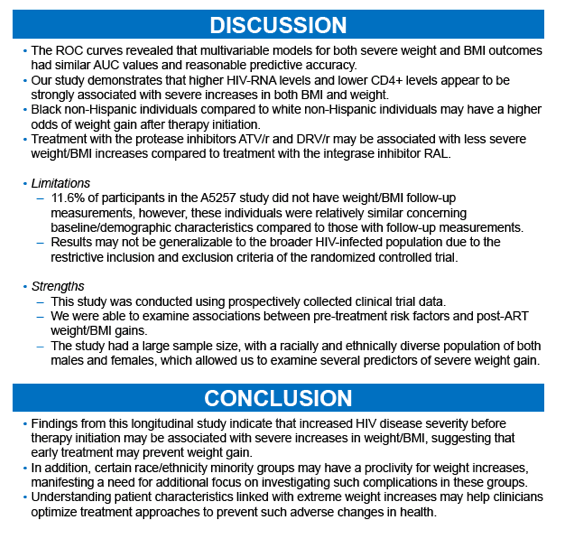
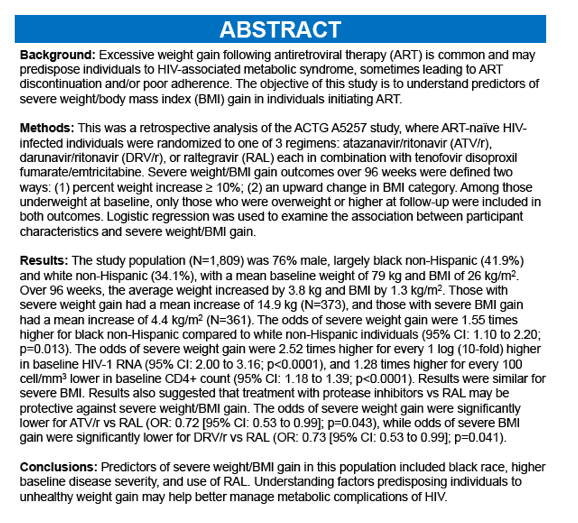
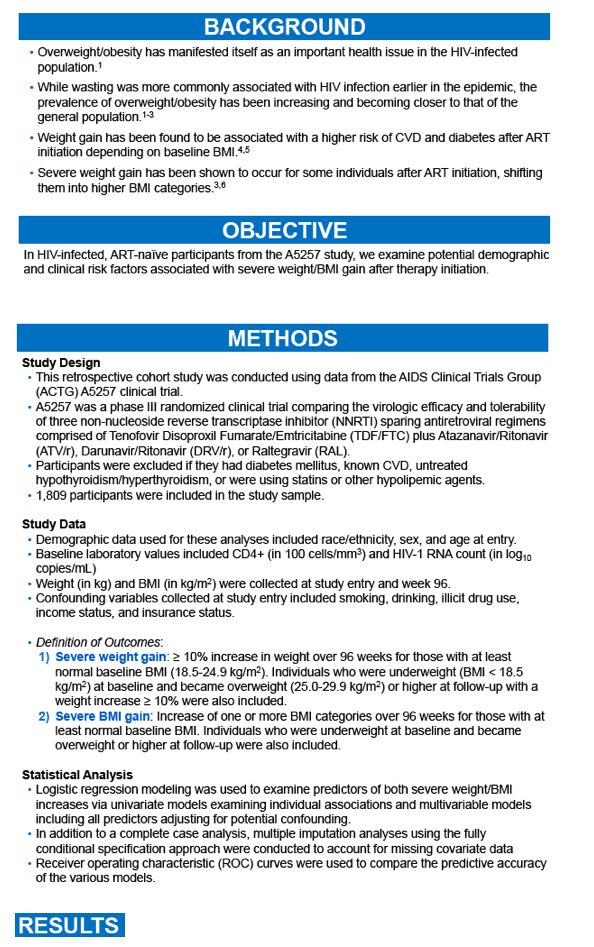
Population characteristics
⋅Participants were predominantly male (76%) and black non-Hispanic (41.9%), with age ranging from 18 to 76 years and averaging 37 years (Table 1).
⋅The study population had a mean baseline weight of 79 kg and baseline BMI of 26 kg/m2.
⋅The distribution of clinical BMI categories at baseline was 3.4% underweight (BMI < 18.5 kg/m2), 47.1% normal (BMI 18.5-24.9 kg/m2), 30.5% overweight (BMI 25-29.9 kg/m2), 15.8% obese (BMI 30-39.9 kg/m2), 2.8% morbid obese (BMI 40-49.9 kg/m2), and 0.4% super obese (BMI ≥ 50 kg/m2).
⋅On average over 96 weeks, weight increased for the study population by 3.8 kg and BMI increased by 1.3 kg/m2, with the prevalence of overweight/obesity increasing to 35.5% overweight, 19.6% obese, 3.6% morbid obese, and 1.1% super obese.
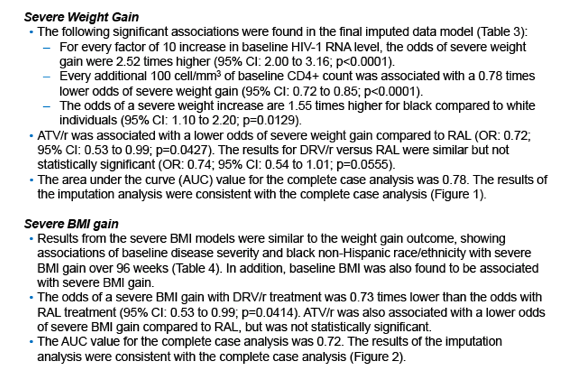
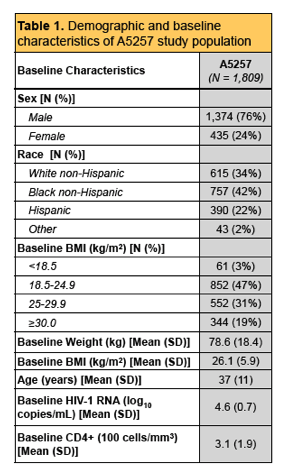
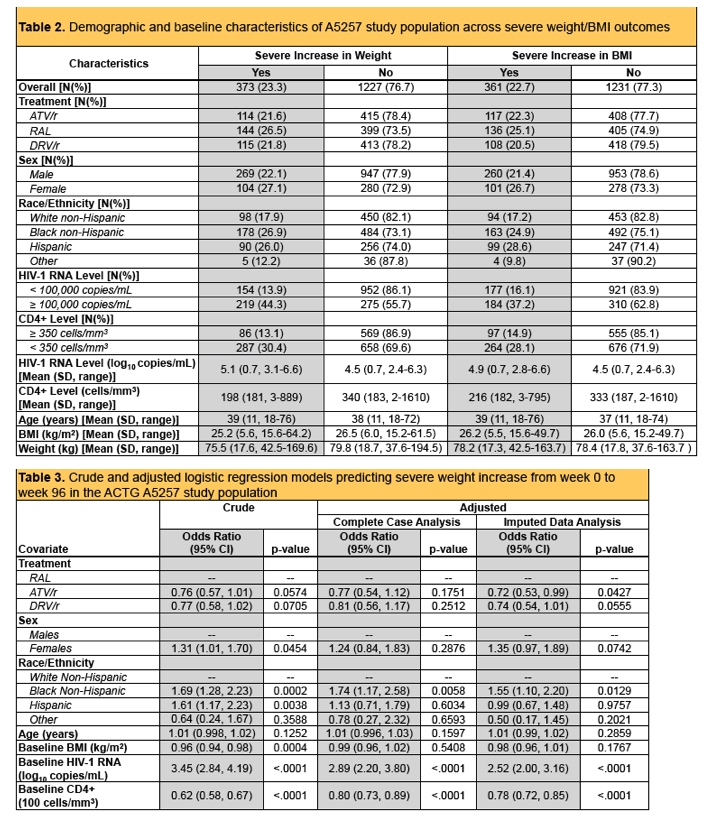
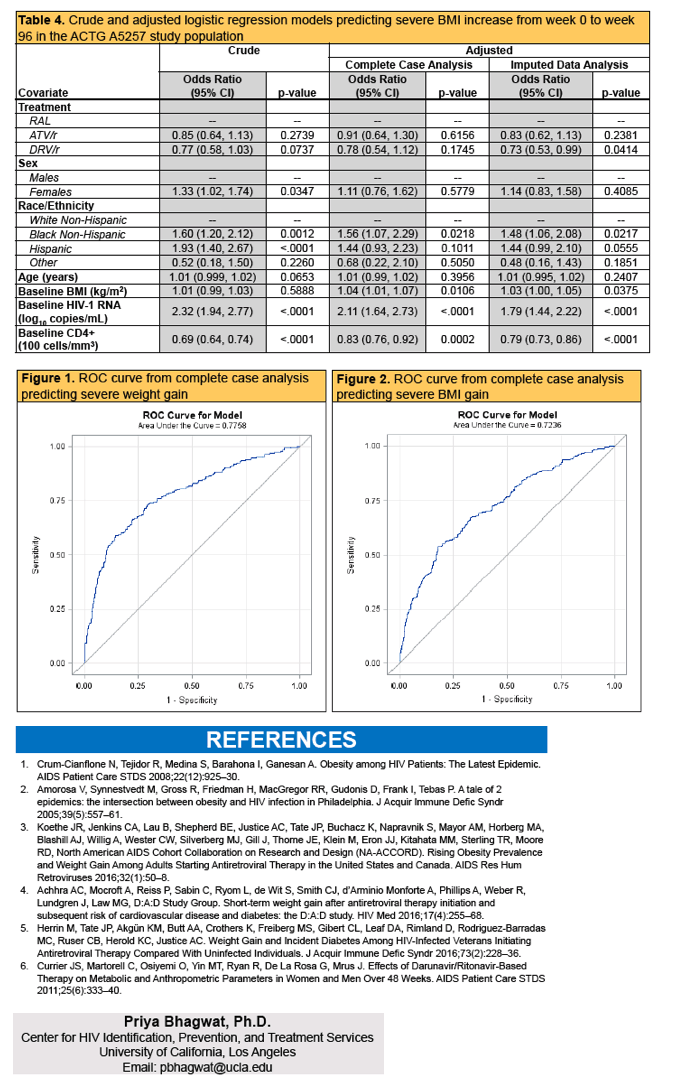
|
| |
|
 |
 |
|
|